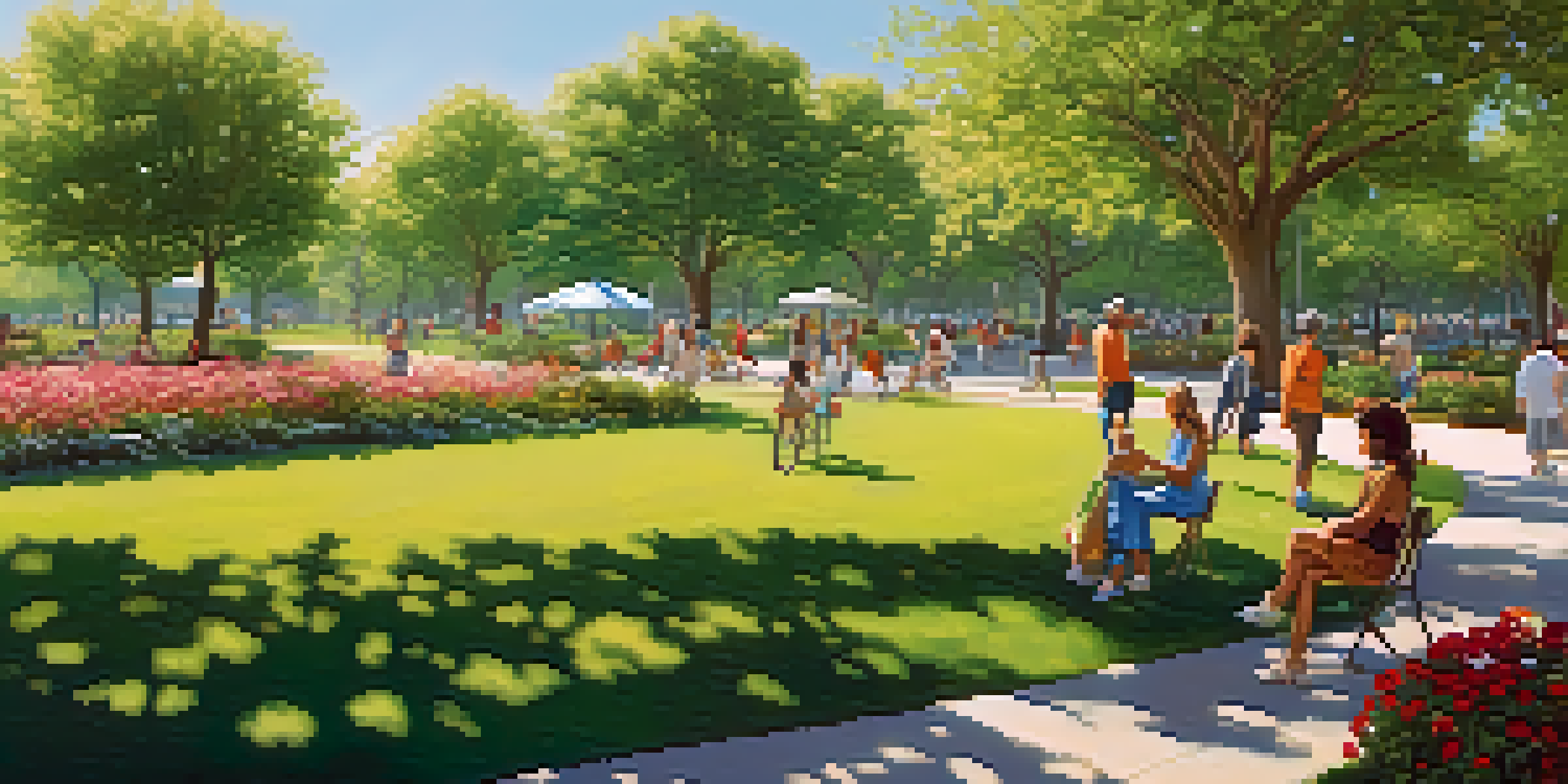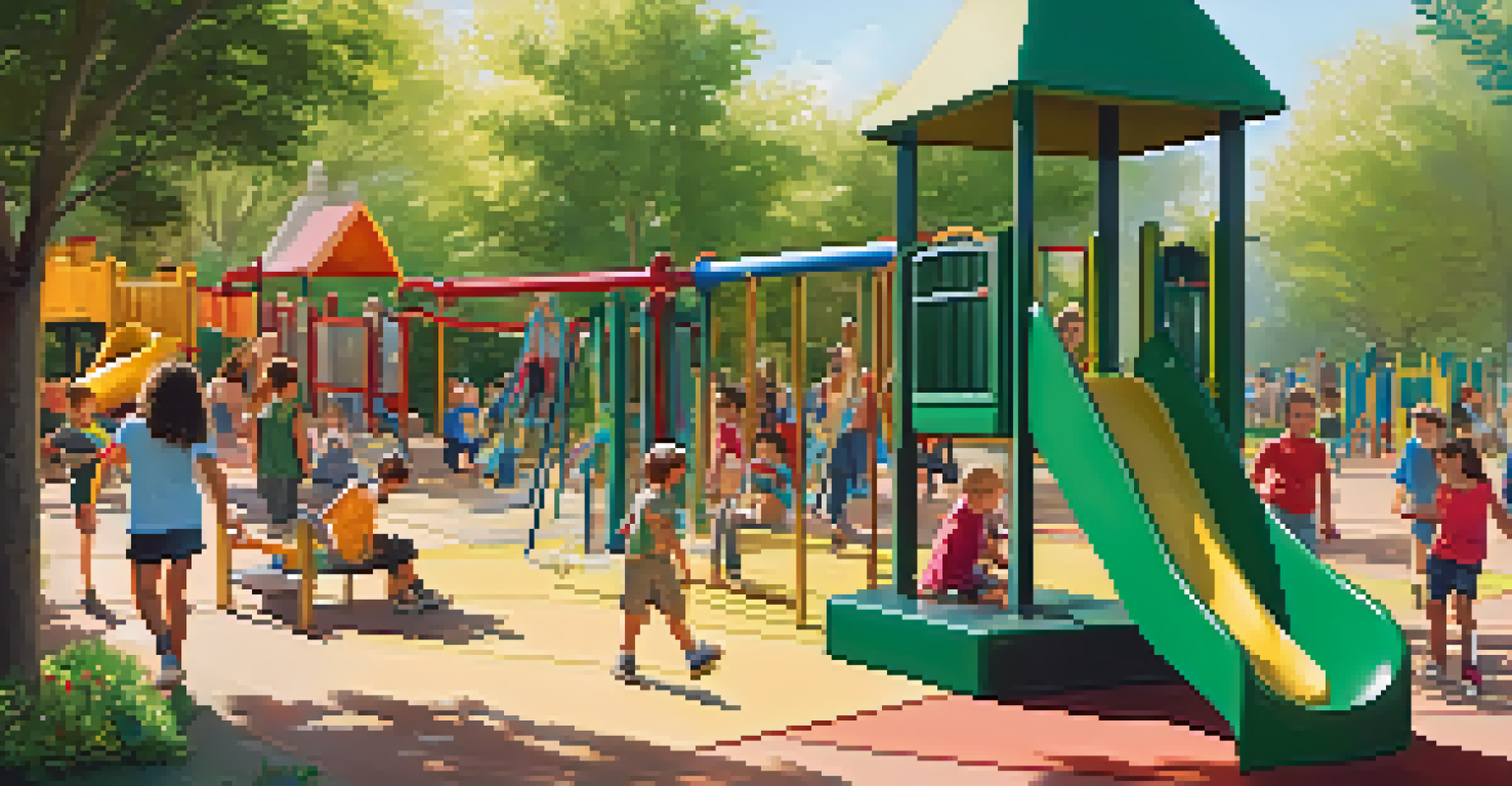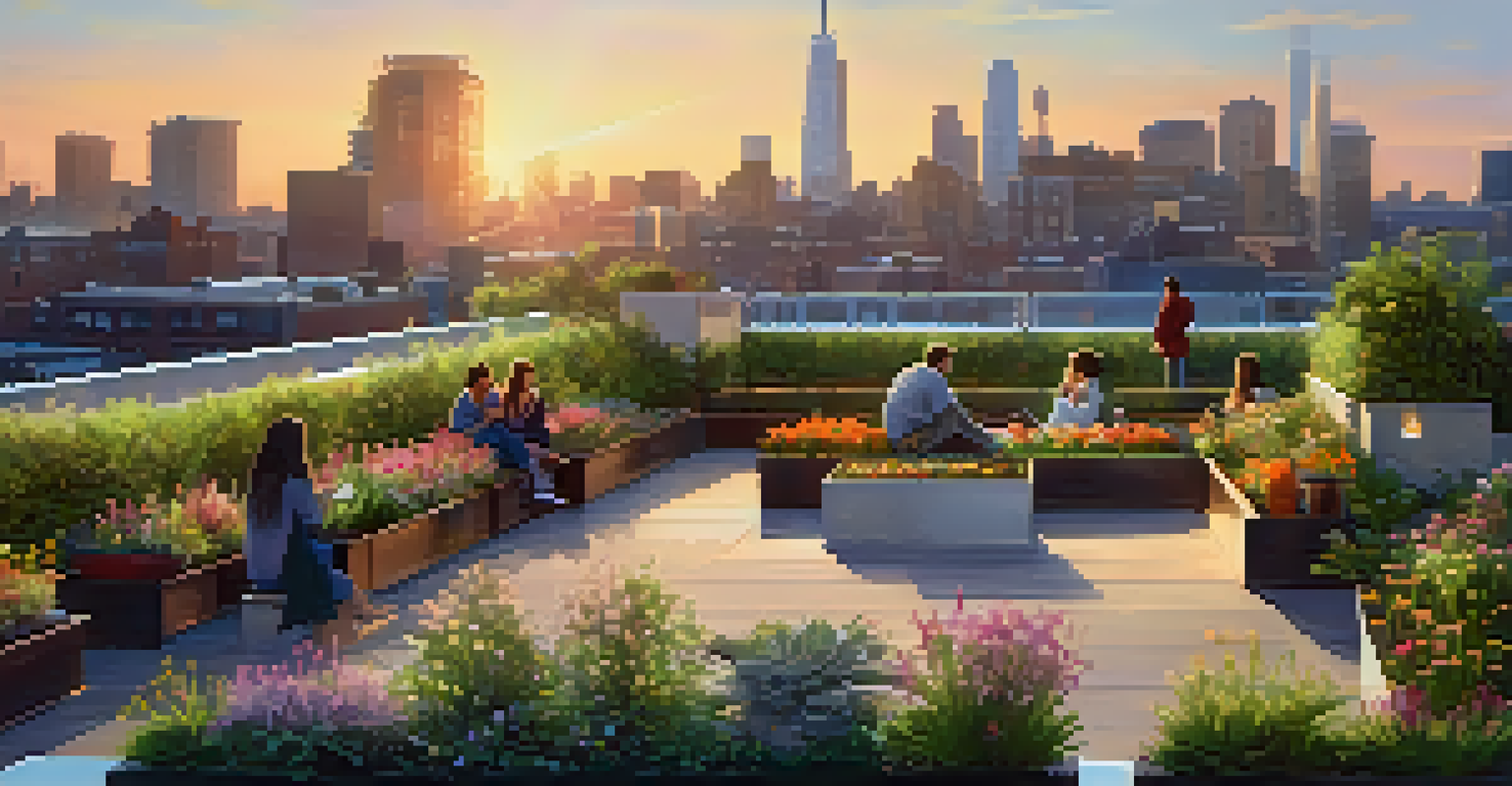The Role of Green Spaces in Urban Health and Wellness

Understanding the Importance of Green Spaces in Cities
Green spaces, such as parks and gardens, play a vital role in urban environments. They provide not just beauty, but also essential benefits to the community. Living in a city can often feel overwhelming, and these natural havens offer a much-needed escape from the hustle and bustle.
In every walk with nature one receives far more than he seeks.
These areas serve as lungs for our cities, improving air quality and reducing pollution. By incorporating greenery, urban planners can help mitigate the effects of urban heat islands, making cities more comfortable. Moreover, these spaces foster biodiversity, allowing various species to thrive alongside us.
Ultimately, green spaces promote a sense of community. They become gathering spots for residents, encouraging social interaction and collaboration. This connection to nature and each other is a cornerstone of healthy urban living.
The Mental Health Benefits of Urban Greenery
Studies show that spending time in nature can significantly reduce stress and anxiety levels. Green spaces provide a tranquil environment that allows individuals to unwind and recharge. Whether it's a quiet stroll through a park or a picnic with friends, these experiences enhance mental well-being.

Furthermore, exposure to greenery can boost mood and increase feelings of happiness. Natural settings stimulate the production of serotonin, often referred to as the 'feel-good' hormone. This positive effect on mood can play a crucial role in combating urban loneliness and depression.
Green Spaces Enhance Urban Life
Parks and gardens provide vital benefits like improved air quality, mental health, and community connections.
Incorporating green spaces into urban planning isn't just about aesthetics; it's a mental health strategy. By prioritizing these areas, cities can create healthier populations, ultimately leading to happier communities.
Physical Health: Green Spaces as Exercise Zones
Green spaces encourage physical activity, which is essential for maintaining good health. Parks and recreational areas provide the perfect backdrop for walking, running, or cycling. When green areas are easily accessible, people are more likely to engage in regular exercise.
The best time to plant a tree was twenty years ago. The second best time is now.
Engaging with nature has been shown to enhance physical health by reducing the risk of chronic illnesses. Activities in these environments can improve cardiovascular health, boost immunity, and even contribute to weight management. Plus, the psychological benefits of exercising outdoors can make workouts feel less like a chore.
Moreover, children benefit immensely from outdoor play in green spaces. This not only fosters physical development but also encourages social skills and creativity. Thus, investing in green areas promotes both individual and community health.
Social Connections Fostered by Green Spaces
Green spaces serve as communal hubs where people can connect and build relationships. Parks often host events, markets, and recreational activities that bring residents together. These gatherings create opportunities for networking, friendship, and a sense of belonging.
Moreover, shared spaces encourage diverse interactions among different demographics. This inclusivity fosters understanding and collaboration within communities. When people are connected, they are more likely to support one another, creating a stronger social fabric.
Economic Gains from Green Investments
Investing in green spaces boosts property values, attracts tourists, and reduces healthcare costs.
The presence of green spaces can reduce social isolation, especially for vulnerable populations. For seniors or those with mobility challenges, a nearby park can be a vital resource for social engagement and physical activity.
Environmental Benefits of Urban Green Spaces
Beyond their aesthetic appeal, green spaces play a crucial role in environmental sustainability. They help filter pollutants and improve air quality, contributing to a healthier atmosphere. Plants absorb carbon dioxide and release oxygen, which is vital for urban areas often plagued by pollution.
Additionally, green spaces are essential for stormwater management. They absorb rainfall, reducing runoff and minimizing the risk of flooding in urban areas. This natural approach to water management can save cities significant amounts of money in infrastructure costs.
Incorporating greenery into urban planning not only benefits residents but also aids in climate resilience. By enhancing biodiversity and providing habitat, cities can adapt better to changing environmental conditions.
Economic Advantages of Investing in Green Spaces
Investing in green spaces can yield significant economic benefits for urban areas. Studies show that proximity to parks can increase property values, making neighborhoods more desirable. Homebuyers often seek out areas with easy access to green spaces, which can boost local real estate markets.
Moreover, green spaces can attract tourists and boost local businesses. Parks, botanical gardens, and outdoor events draw visitors, providing opportunities for local shops and restaurants. This influx of visitors can stimulate the economy and create jobs.
Inclusive Design is Essential
Creating accessible green spaces fosters community pride and ensures everyone can enjoy nature's benefits.
Furthermore, healthier communities reduce healthcare costs. By promoting physical and mental well-being, cities can alleviate some burden on public health systems. In the long run, investing in green spaces is a smart financial strategy for urban development.
Designing Inclusive Green Spaces for Everyone
Creating green spaces that are accessible to everyone is essential for maximizing their benefits. Urban planners must consider the needs of all community members, including children, seniors, and people with disabilities. Inclusive design ensures that everyone can enjoy the advantages of nature.
Features like wheelchair-accessible paths, sensory gardens, and inclusive play areas can make a significant difference. By catering to diverse populations, cities can foster a sense of belonging and community pride. These spaces should be welcoming to all, encouraging exploration and interaction.

Moreover, involving community members in the design process can lead to more meaningful green spaces. When residents have a say in what their parks look like, they are more likely to take ownership and care for these areas. This participatory approach strengthens community ties and enhances the overall impact of green spaces.
The Future of Green Spaces in Urban Development
As urbanization continues to rise, the need for green spaces is more pressing than ever. Cities are recognizing the importance of incorporating nature into their planning strategies. The future of urban development will likely prioritize sustainability, health, and well-being.
Innovative designs, such as vertical gardens and rooftop parks, are emerging as creative solutions to space limitations. These unique approaches allow cities to integrate greenery without sacrificing land. The use of technology, such as smart irrigation systems, can also enhance the sustainability of urban green spaces.
Ultimately, the future of urban living hinges on our ability to harmonize nature and city life. By prioritizing green spaces, we can create vibrant, healthy communities that thrive in harmony with the environment.